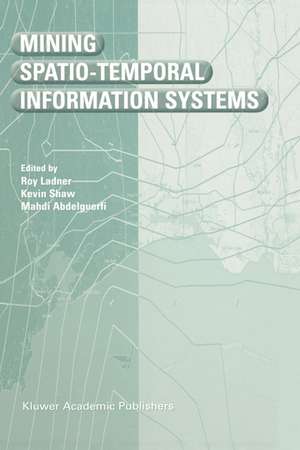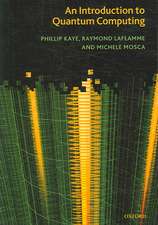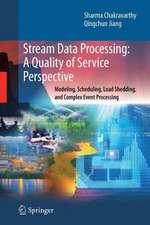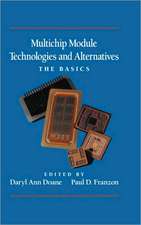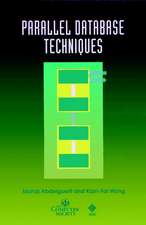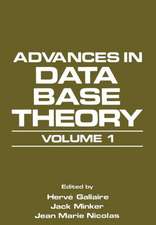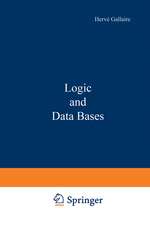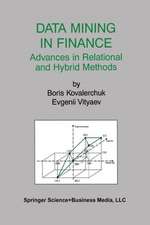Mining Spatio-Temporal Information Systems: The Springer International Series in Engineering and Computer Science, cartea 699
Editat de Roy Ladner, Kevin Shaw, Mahdi Abdelguerfien Limba Engleză Hardback – 31 aug 2002
Mining Spatio-Temporal Information Systems is structured to meet the needs of practitioners and researchers in industry and graduate-level students in Computer Science.
| Toate formatele și edițiile | Preț | Express |
|---|---|---|
| Paperback (1) | 640.05 lei 6-8 săpt. | |
| Springer Us – 22 mar 2013 | 640.05 lei 6-8 săpt. | |
| Hardback (1) | 646.95 lei 6-8 săpt. | |
| Springer Us – 31 aug 2002 | 646.95 lei 6-8 săpt. |
Din seria The Springer International Series in Engineering and Computer Science
- 24%
 Preț: 1041.97 lei
Preț: 1041.97 lei - 20%
 Preț: 643.50 lei
Preț: 643.50 lei - 18%
 Preț: 1225.62 lei
Preț: 1225.62 lei - 18%
 Preț: 965.02 lei
Preț: 965.02 lei - 20%
 Preț: 646.12 lei
Preț: 646.12 lei - 18%
 Preț: 948.79 lei
Preț: 948.79 lei - 20%
 Preț: 646.62 lei
Preț: 646.62 lei - 15%
 Preț: 637.46 lei
Preț: 637.46 lei - 20%
 Preț: 643.83 lei
Preț: 643.83 lei - 18%
 Preț: 949.23 lei
Preț: 949.23 lei - 20%
 Preț: 644.48 lei
Preț: 644.48 lei - 20%
 Preț: 994.92 lei
Preț: 994.92 lei - 20%
 Preț: 645.97 lei
Preț: 645.97 lei - 18%
 Preț: 946.87 lei
Preț: 946.87 lei - 20%
 Preț: 995.57 lei
Preț: 995.57 lei - 18%
 Preț: 956.99 lei
Preț: 956.99 lei - 20%
 Preț: 644.98 lei
Preț: 644.98 lei - 15%
 Preț: 649.54 lei
Preț: 649.54 lei - 18%
 Preț: 950.21 lei
Preț: 950.21 lei - 18%
 Preț: 1221.38 lei
Preț: 1221.38 lei - 18%
 Preț: 957.62 lei
Preț: 957.62 lei - 15%
 Preț: 643.99 lei
Preț: 643.99 lei - 18%
 Preț: 948.47 lei
Preț: 948.47 lei - 18%
 Preț: 947.35 lei
Preț: 947.35 lei - 20%
 Preț: 1284.65 lei
Preț: 1284.65 lei - 20%
 Preț: 1628.31 lei
Preț: 1628.31 lei - 20%
 Preț: 1285.78 lei
Preț: 1285.78 lei
Preț: 646.95 lei
Preț vechi: 808.69 lei
-20% Nou
Puncte Express: 970
Preț estimativ în valută:
123.79€ • 129.60$ • 102.43£
123.79€ • 129.60$ • 102.43£
Carte tipărită la comandă
Livrare economică 05-19 aprilie
Preluare comenzi: 021 569.72.76
Specificații
ISBN-13: 9781402071706
ISBN-10: 1402071701
Pagini: 184
Ilustrații: X, 170 p.
Dimensiuni: 155 x 235 x 16 mm
Greutate: 0.46 kg
Ediția:2002
Editura: Springer Us
Colecția Springer
Seria The Springer International Series in Engineering and Computer Science
Locul publicării:New York, NY, United States
ISBN-10: 1402071701
Pagini: 184
Ilustrații: X, 170 p.
Dimensiuni: 155 x 235 x 16 mm
Greutate: 0.46 kg
Ediția:2002
Editura: Springer Us
Colecția Springer
Seria The Springer International Series in Engineering and Computer Science
Locul publicării:New York, NY, United States
Public țintă
Professional/practitionerCuprins
1: Spatio-Temporal Data Mining and Knowledge Discovery: Issues Overview.- 1. Introduction.- 2. Background.- 3. Data.- 4. Data Issues.- 5. Conclusions.- 2: Indexing of Objects on the Move.- 1. Introduction.- 2. Problem Statement and Related Work.- 3. The TPR-Tree.- 4. The REXP-Tree.- 5. Summary of Performance Experiments.- 6. Conclusions.- 3: Efficient Storage of Large Volume Spatial and Temporal Point-Data in an Object-Oriented Database.- 1. Introduction.- 2. The GIDB System.- 3. The Problem Domain.- 4. An Object-Oriented Solution.- 5. Requirements.- 6. Towards a Solution.- 7. The Design.- 8. A Flexible Framework.- 9. Sample Applications.- 10. Evaluation.- 11. Future Developments.- 12. Conclusions.- 4: A Typology of Spatiotemporal Information Queries.- 1. Introduction.- 2. Spatiotemporal Information for the Dynamic World.- 3. A Typology of Spatiotemporal Queries.- 4. Conclusions.- 5: Visual Query of Time-Dependent 3D Weather in a Global Geospatial Environment.- 1. Introduction.- 2. 4D Data Model for the Visual Earth.- 3. Scalable, Hierarchical 3D Data Structure.- 4. Interactive, Accurate Visualization of Nonuniform Data.- 6: STQL — A Spatio-Temporal Query Language.- 1. Introduction.- 2. Related Work.- 3. The Data Model.- 4. Querying with Spatio-Temporal Operations.- 5. Visual Querying.- 6. Conclusions.- 7: Tripod: A Spatio-Historical Object Database System.- 1. Introduction.- 2. Case Study: UK National Land Use Database.- 3. The Tripod Object Model.- 4. Architecture.- 5. Related Work.- 6. Conclusions.- 8: Spatio-Temporal Subgroup Discovery.- 1. Introduction: Spatial Subgroup Mining.- 2. Application Example.- 3. Representation of Spatio-Temporal Data and of Spatial Subgroups.- 4. Spatio-Temporal Analyses.- 5. Database Integration.- 6. Conclusions and Future Work.
